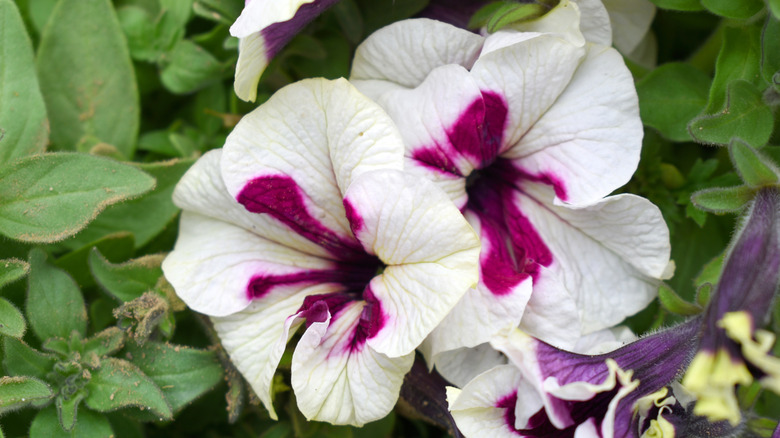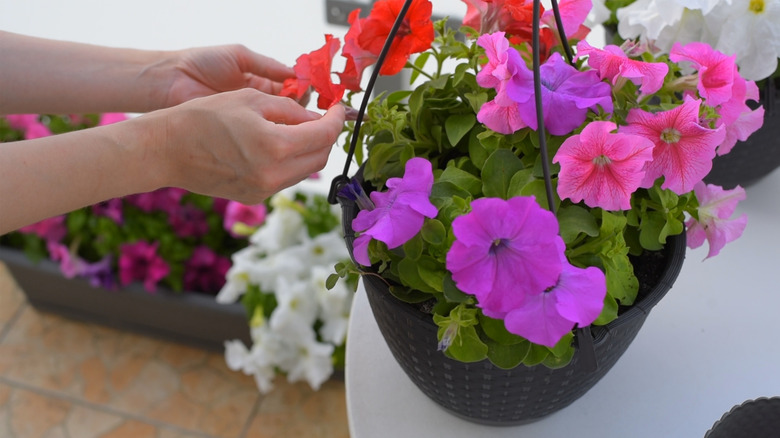The Essential Gardening Task That Keeps Petunias Blooming All Summer
Gardeners looking for an easy, but pretty, heat-tolerant plant that thrives in full-sun have often turned to petunias (Petunia x hybrida). They are great in containers, hanging baskets, or in the ground and come in such a wide array of colors that there is at least one petunia that will fit easily into any sunny garden. Despite a reputation for being low-maintenance plants, there is one vital gardening task you need to perform to keep them blooming all season long: deadheading.
Like all plants, petunias want to reproduce, and they do so by producing seeds after flowering. If you leave spent flowers on their stems, your plants will channel their energy into producing seeds. Conversely, if you remove (or "deadhead") those wilted blooms before the plant has a chance to set seed, the plant will create more flowers. Deadheading the petunias as often as once a week will ensure that your plant keeps blooming and bringing color to your garden. Dig deeper to learn about what deadheading is and why it is a must.
How to deadhead your petunias
Have you ever been guilty of simply popping the spent petunia flowers off the stem? We all have. It's just so easy to grab the petals as you walk by, but if you really want to keep your petunias in tip-top shape, that's not the best method. You have two options, and both include removing the base of the flower where the seeds are.
You can either clip the spent bloom just below the base of the flower where it meets the stem or get a little more aggressive and remove the flower and its stem where it attaches to the main branch. The latter method may lead to a tidier plant and give you an opportunity to cut back any struggling foliage. To help your plants shine even more, consider pairing petunias with these 10 companion plants. From favorites that thrive in containers to perennials for pollinator gardens, there's a companion for your petunias no matter how you grow them.

